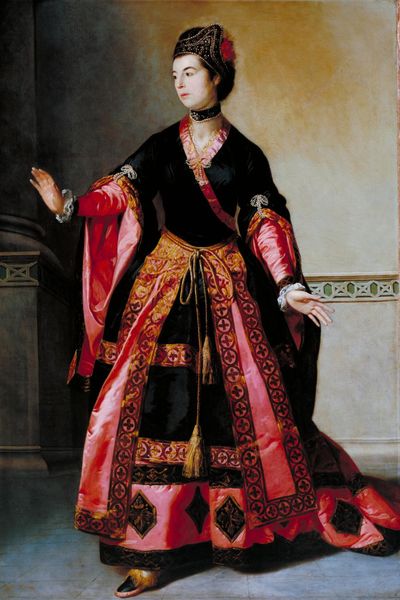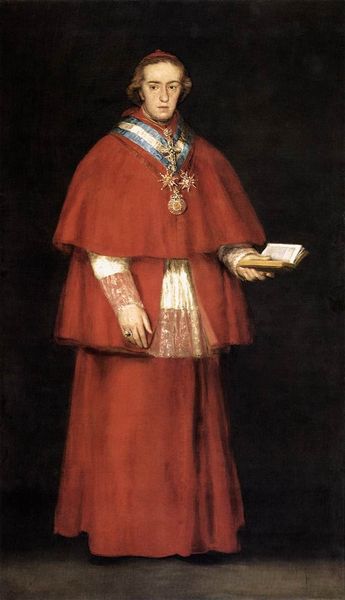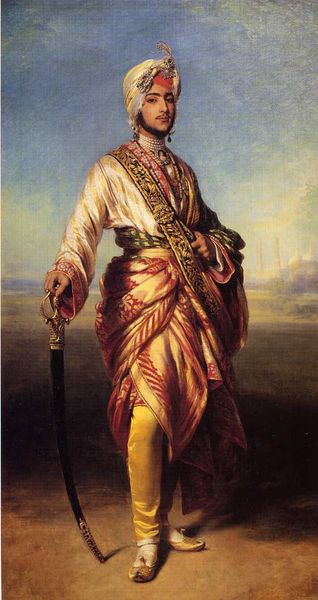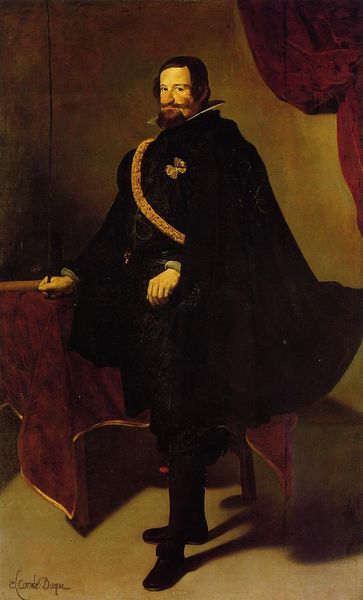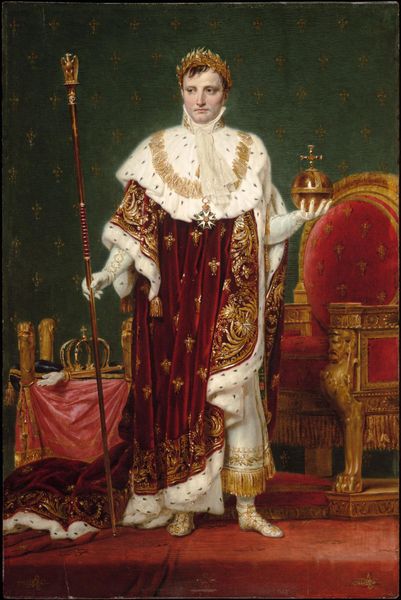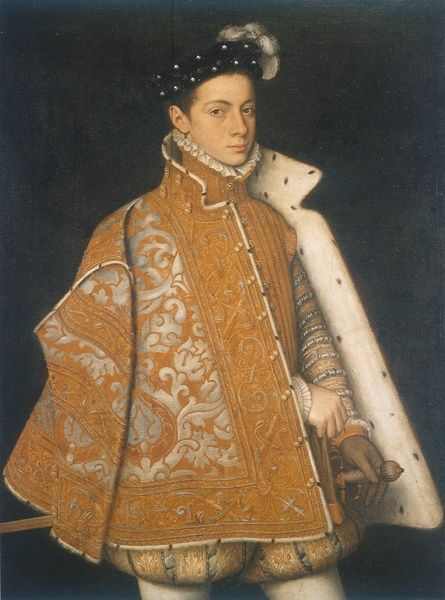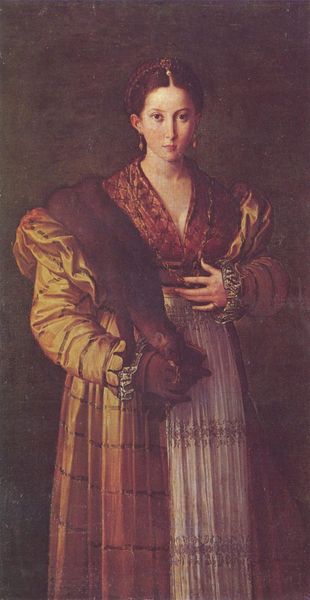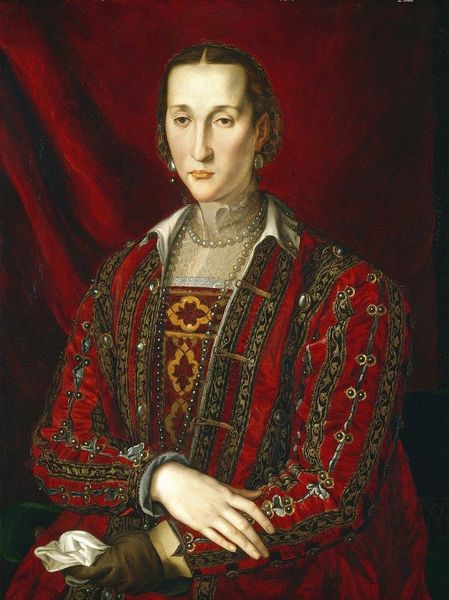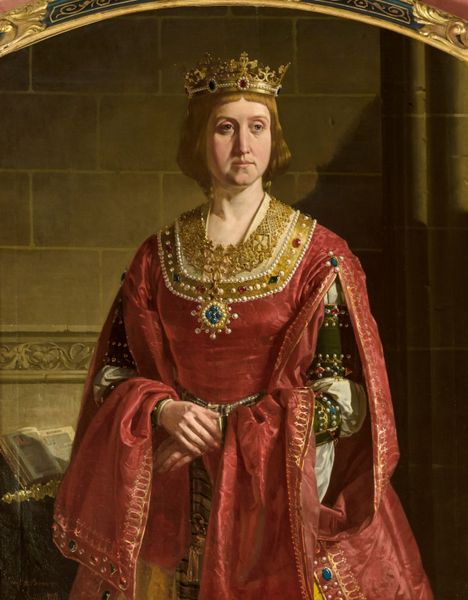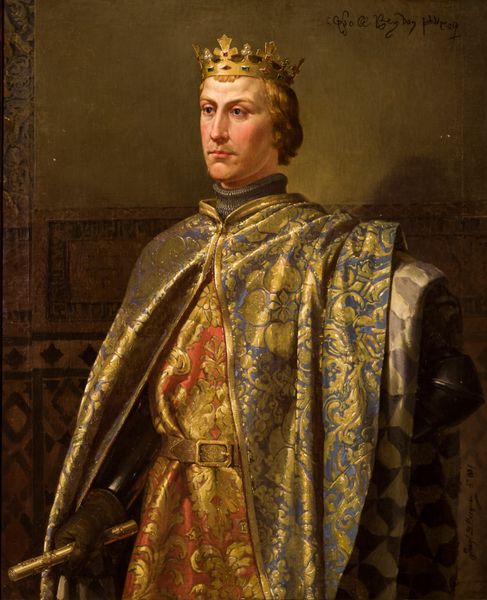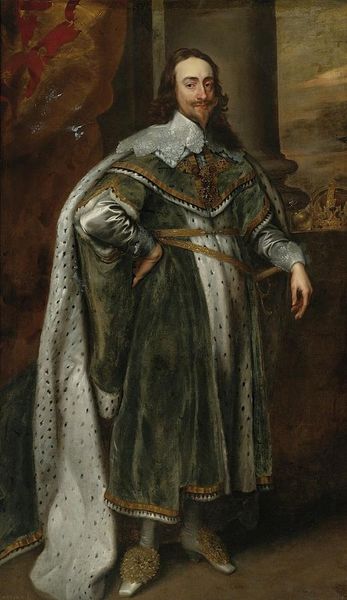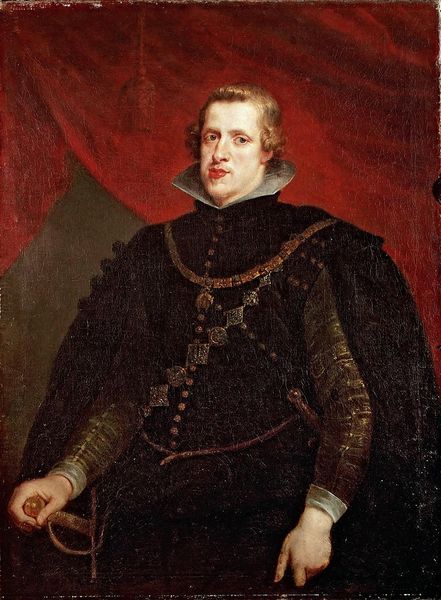
oil-paint
#
portrait
#
oil-paint
#
oil painting
#
romanticism
#
history-painting
Copyright: Public domain
Curator: Alexander Clarot painted this portrait of Charles Alain de Rohan in 1841. The subject is depicted as a knight of the Order of the Golden Fleece. Editor: Red! Good heavens, that’s a LOT of red! I feel like I’ve walked into a cardinal’s dressing room. Though the landscape background lends it an almost theatrical quality. Curator: Note the careful depiction of Rohan’s clothing and the elaborate collar. Consider how the use of oil paint adds to the luxuriousness on display here. It really does emphasize the details of Rohan’s status. Editor: Right, that meticulously rendered fabric *is* pretty mesmerizing. Almost sculptural, isn’t it? I mean, look at how the light catches the folds. But the face… feels almost like an afterthought compared to the robe. What do you make of that contrast? Curator: Well, the process of obtaining and portraying these kinds of fabrics signified enormous wealth and resources at the time. I think the meticulous detailing, combined with the portrait's clear aspiration towards historical painting, suggests a deliberate strategy to connect Rohan with a lineage of power and nobility. It's a statement about inherited status and social roles being reinforced. Editor: I see that, certainly. And the composition–column on the left, landscape on the right–keeps it stable, very composed. It feels... weighty. Still, I can't help but feel this painting lacks real fire. Where's the *Rohan* in all that red, you know? Curator: Perhaps, but isn't that precisely the point? Clarot's artwork becomes an artifact about its specific moment. The brushwork, though skilled, never transcends the constraints of its representational objective. And that limitation is where it finds its historical significance. Editor: Hmm, so less about the person, more about the machinery that made him 'him.' I find that strangely melancholy. Still, I'm always drawn to artwork that shows people expressing power, though! What are your closing thoughts on that? Curator: Ultimately, I feel that analyzing artworks like this teaches us to see social systems at play, right in front of our eyes.
Comments
No comments
Be the first to comment and join the conversation on the ultimate creative platform.
